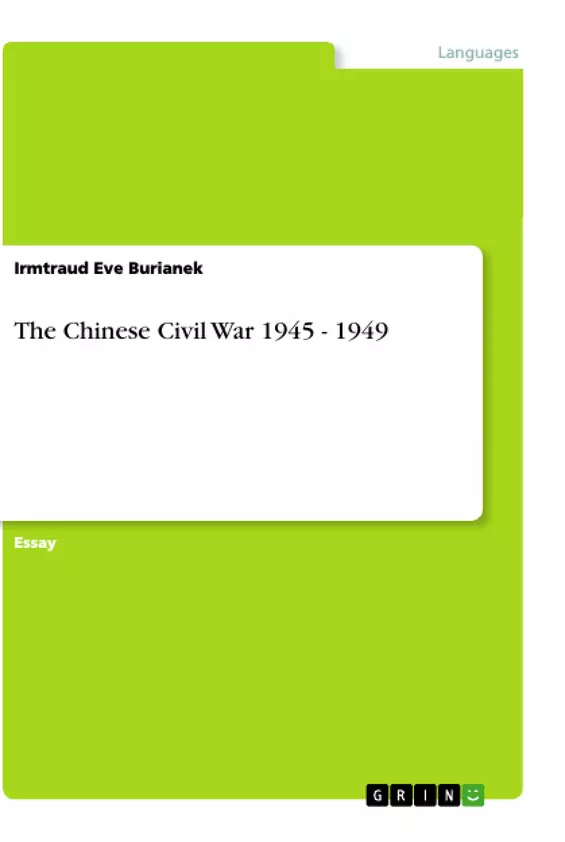"One of the best Chinese Civil War books of all time" - BookAuthority
The Chinese civil war is one of the key events of 20th century. The victory of the Communists over the Nationalists determined the Chinese history over several generations and defined international relations in East Asia throughout the Cold War era and after. The civil war in China represents not only the clashes of armies, but also of nations and classes. As all civil wars it represents furthermore a traumatic and painful process within a people with atrocities on both sides and horrendous suffering of combatants and civilians.
The civil strife between the Nationalists and Communists on mainland China had begun in the 1920s, coming to a head right after the end of World War II in 1945, when the Communists began the successful drive that won them final control over China in October 1949. From then on China was under the rule of Mao’s Communist Party with one exception: Taiwan. The island southeast of mainland China was ruled by Chiang Kai-shek. Since 1949 the world has dealt with two Chinese states: the People’s Republic of China or PRC in mainland China under the Communists and the Republic of China or ROC in Taiwan under the Nationalists.
Inhaltsverzeichnis (Table of Contents)
- I. A World in Turmoil
- II. Chinese Against Chinese: The Reality of Civil Warfare
- The Rectification Campaign
- The Takeover of Chaoyang
- Guerilla Warfare
- The Return of Jin Ting-quan
- The Death of Jin Ting-quan
- The Red Army
- III. Revolutionary Women
- Feminist Ideas of the Communist Party
- Mao’s Writings on Women’s Rights
- The Gap between Theory and Practice
Zielsetzung und Themenschwerpunkte (Objectives and Key Themes)
The work aims to provide a detailed account of the Chinese Civil War from 1945 to 1949, highlighting the complexities of the conflict and its impact on Chinese society. It examines the clash of ideologies, the role of external powers, and the impact of the war on ordinary people, focusing on the experiences of individual communists during this tumultuous period.- The ideological struggle between communism and nationalism
- The impact of World War II on China and the emergence of the Cold War
- The role of external powers in the conflict, particularly the United States and the Soviet Union
- The social and political impact of the civil war on Chinese society, particularly on peasants and women
- The reality of civil warfare and the atrocities committed by both sides
Zusammenfassung der Kapitel (Chapter Summaries)
I. A World in Turmoil
This chapter sets the stage for the Chinese Civil War by providing a broader historical context of unrest and turmoil in Asia during the 20th century. It discusses the rise of fascism, the global conflict of ideologies, and the influence of outside powers on China.II. Chinese Against Chinese: The Reality of Civil Warfare
This chapter focuses on the experiences of Comrade Wang, a young communist who fought in the civil war. It details his involvement in the Rectification Campaign, the takeover of Chaoyang, and the subsequent guerilla warfare against Kuomintang forces. It also highlights the brutal realities of the conflict, including atrocities committed by both sides.III. Revolutionary Women
This chapter examines the Communist Party’s feminist ideas and their impact on Chinese women. It explores Mao’s writings on women’s rights and the challenges faced by women in a society undergoing revolutionary change. It highlights the contradiction between the theory of women’s liberation and the reality of their experiences.Schlüsselwörter (Keywords)
The key themes and topics explored in this text include the Chinese Civil War, communism, nationalism, the Cold War, external powers, social and political impact, atrocities, peasant society, women’s rights, and the realities of civil warfare.- Citar trabajo
- Dr.phil. Irmtraud Eve Burianek (Autor), 2010, The Chinese Civil War 1945 - 1949, Múnich, GRIN Verlag, https://www.grin.com/document/199640



